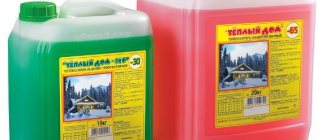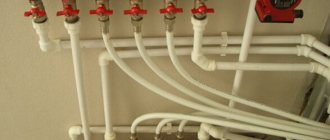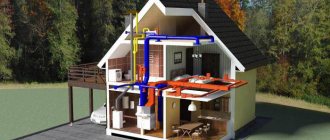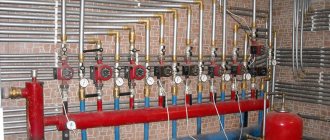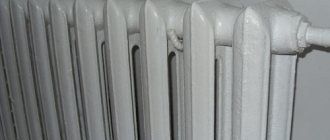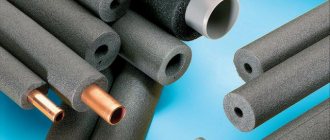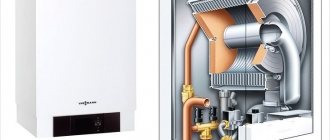The best coolant in composition is ordinary water. It is worth diluting water with antifreeze and pouring it into the heating system only if absolutely necessary. The numerous negative aspects of antifreeze greatly prevail over the positive qualities of the water coolant.
When making your final decision, weigh the performance efficiency of water and antifreeze-based coolant. We have been convinced many times that water as a coolant is the optimal solution. Any antifreeze included in the coolant should be used only in one case, which we will talk about in detail today.
The efficiency of heating your home largely depends on what coolant you use in the heating system of a country house. The coolant is the final touch that will help your heating system sparkle with all its colors, bringing coziness and comfort to your home. Despite the apparent simplicity of choosing a coolant, you should approach this process as carefully and responsibly as possible.
The coolant, which accumulates and transfers thermal energy, inevitably passes through the heart of the heating system, which is an expensive boiler. In addition, the coolant washes the pump rotor, cooling the engine in the forced heating system. And of course, the coolant directly affects pipes, fittings and radiators. Avoiding harmful effects on all elements of the system and ensuring maximum heat transfer coefficient is the main task that the owner needs to solve when choosing a coolant for the heating system of a country house.
Coolant - basic requirements in a heating system
What kind of coolant should be used for an autonomous heating system? Let's try to formulate the necessary criteria for compliance with the “ideal” option.
- Let's start with the fact that we will need a heating fluid with the highest possible heat capacity. This condition is necessary for high-quality accumulation and further release of thermal energy through radiators.
- We will need a coolant with a chemical composition that does not activate corrosion processes in boiler equipment, pipe distribution, heating and radiator, shut-off and control and other heating system structures.
- Special requirements should be placed on the chemical component of the coolant. The composition passes through seals of pumping equipment and other structural elements containing rubber O-rings and can expose them to destruction.
- One of the main indicators indicating that you have a high-quality coolant at your disposal is a wide range of temperature use. A manufacturer that cares about its reputation offers a coolant with performance characteristics ranging from low crystallization temperature values to high boiling threshold values.
- The coolant should not contain salt, which “loves” to fall out in the form of scale in the heat exchanger, rendering it inoperable, and also to grow as solid deposits in the internal section of the pipes.
- It is necessary that the heating fluid has increased stability. We will need a coolant that does not disintegrate into its component parts over time, either under the influence of high temperatures or under the influence of its chemical composition. Throughout its service life, the coolant must maintain the declared technical characteristics, such as: density, fluidity, heat capacity, chemical inertness.
- In addition, the coolant should not threaten the health of residents in the event of leaks. Toxic fumes are not allowed. The liquid used for heating must be completely non-flammable and not form explosive gas mixtures upon evaporation.
- As a rule, the heating system has significant volumes, so one of the important criteria for a thrifty homeowner is the acceptable cost of the coolant.
Flaws
Unlike water, propylene glycol for heating systems has a lower heat capacity. This means that it accumulates less heat and, therefore, releases less of it. As a result, consumers will require more powerful heating appliances.
The viscosity of antifreeze is 4–5 times higher than that of water. For this reason, the circulation rate of propylene glycol through the system will be less. When choosing coolants for heating systems based on propylene glycol, it is necessary to take these factors into account.
Coolant: Glycol or Water?
On the one hand, the simplest liquid for heating systems—water—meets almost all the necessary requirements. Water is not dangerous, does not harm the environment, has a high heat capacity coefficient, and the operating periods are not regulated by a time interval.
However, one significant disadvantage negates all the advantages - water crystallizes already at zero temperature. Quite often, we do not heat our home for the full duration of the heating season. Often we leave country houses during vacation or simply go to the city. In this case, during downtime, water will do a disservice. When freezing, we will most likely encounter failure of the boiler, pipes and radiators.
In such cases, liquids containing propylene glycol or other antifreezes come to the rescue. When exposed to negative temperatures, such liquids significantly lose their fluidity, but do not freeze and do not have a sharp expansion coefficient, as a result of which the equipment remains in working order, even when subjected to freezing.
Water
Thus, it is not difficult to decide which coolant to use for the heating system: for constant operation and maintaining a positive temperature, we recommend using ordinary pre-settled and boiled water. Ordinary tap water contains various salts and is saturated with oxygen, which contribute to the deposition of scale in the heating system.
Boiled water will reduce the occurrence of scale in the heat exchanger, since during boiling the percentage of dissolved gases O2, Cl, H2S decreases and the water softens slightly. The disadvantage of this method is that it is difficult to carry out the task of boiling large volumes of water. In addition, boiling does not provide complete removal of dissolved salts.
The most effective is the use of so-called “softener filters.” Such filters carry out cleaning based on the reagent, ion exchange or electromagnetic principle of influence. You can purchase such a product in special thermal equipment stores. Most of these filters are used specifically for boiler water preparation. In addition, you can filter the water yourself using an ion exchange filter (GEYSER type).
There is a practice of mixing special reagents with water to help soften it. A well-known remedy is soda ash; sodium orthophosphate is also used. In both cases, you need to be moderate and follow the indicated dosage. Exceeding the ratios leads to the opposite effect; such a coolant has reduced thermal characteristics and provokes the corrosiveness of the solution.
The best option, however, would be to purchase water from a company engaged in the production of drinking water. The most expensive solution is to use distilled liquid.
Antifreeze
If you use your home as a temporary residence or often leave it in winter, then the only correct solution would be to operate a heating system with a coolant containing glycol or glycerin. Such liquids will allow you to leave the heating circuit and boiler equipment unattended for a long time. The use of antifreeze virtually eliminates the possibility of heating equipment “defrosting”. In addition, you don’t have to worry about scale deposits.
We invite you to get acquainted with well-known manufacturers, as well as understand the three main compositions used in coolants. Consider their distinctive characteristics and areas of application. Today, the domestic market does not experience a shortage of antifreeze mixtures. Antifreeze for heating a country house or summer cottage can be found at any construction market.
Features of use for heating
The coolant propylene glycol is poured into the system in accordance with the technical specifications. Before using antifreeze, a number of preparatory steps should be carried out:
- drain the liquid from the system, flush all circuits with caustic soda, remove all deposits and rust;
- perform sealing of all connections, including tappings and bends;
- remove and replace all zinc-containing parts.
After this, you can fill the system with propylene glycol solution. In this case, it is recommended to keep the drain valve open at the lowest point. This action will allow you to immediately see when the thermal contours are completely filled. After filling, the system is checked for leaks and a test run of the heating equipment is carried out.
Coolant for heating system
Modern coolant has a complex set of constituent chemical elements. Known antifreeze fluids used in heating systems are based on three fundamental components. Accordingly, each liquid is endowed with different properties and characteristics. The main difference in the technical characteristics of the presented brands is determined by the fillers on which the coolant is mixed:
- ethylene glycol; - propylene glycol; - glycerin.
The coolant is produced in the form of a concentrate or is often offered a little more expensive, ready for use, without additional enrichment with water. Manufacturers offer high-quality antifreeze. Thanks to the moderate concentration and proper proportions of polyhydric alcohol, a good coolant does not “corrode” the rubber gaskets of pumping equipment. There is a complete absence of negative impact on polypropylene or metal-plastic pipes.
The Russian market offers antifreeze liquids with a huge variety of brands from various, both domestic and foreign manufacturers. In common parlance, “anti-freeze” is found under the names: “Warm House”, “Dixis”, “Thermagent Eco”, “Thermos Eco”, “TeploDom”, “Antifrogen N” and many others. As a rule, antifreezes have different colors, repeating almost the entire range of the rainbow palette: green, blue, yellow, red and even pink.
Flushing
The heating system requires periodic flushing. Various liquids are used for these purposes. Washing at home is usually done with water.
To get a good result, the system needs to be filled with a solution of caustic soda for about an hour, which perfectly fights corrosion and scale.
Another important point is to know what the required freezing temperature of antifreeze is. Only if this condition is met can you choose the most optimal liquid for heating systems. Propylene glycol has a number of advantages compared to ordinary water. And the main thing is the ability not to freeze at low temperatures.
After pouring antifreeze into the heating system, you don’t have to worry about “defrosting” of the heating appliances in your country house. You don’t have to constantly go there to check the status of the system.
Various additives give the antifreeze liquid its best qualities. As a result, the heating system will last longer. Additives help protect metal surfaces from corrosion while preventing the destruction of sealing elements.
Ethylene glycol based coolant
Most likely, due to its simple preparation and low cost, the group of antifreezes that contain ethylene glycol is the most common among others. As we noted, the coolant is found in the form of a concentrate or in a ready-made solution, usually with a crystallization threshold at -30º C. Antifreeze is red, supplied in cans from 10 to 50 liters. The declared characteristics in a concentrated state are capable of serving a temperature range from – 65º to + 110º C.
If necessary, guided by climatic realities, you can always bring the coolant to the required crystallization value. The requirement for antifreeze concentration is regulated by the service center of your boiler and pumping equipment. It is recommended to mix the concentrate with distilled water according to the table below. The red color of antifreeze warns of the need to adhere to the strictest safety measures.
| Water percentage | Concentrate percentage | Freezing threshold | Boiling threshold |
| 87,5% | 12,5% | -7 | 100 |
| 75% | 25% | -15 | 100 |
| 50% | 50% | -40; -45 | +130; +140 |
| 40% | 60% | -50; -60 | +150; +160 |
| 25% | 75% | -70 | +170 |
Disadvantages of Ethylene Glycol
- Ethylene glycol foams when exposed to high temperatures, forming air pockets in the system. Manufacturers solve the problem by adding special additives. Additives help prevent foam formation, including preventing corrosion processes in metal structural elements. Galvanized elements should be avoided - they are susceptible to the negative effects of ethylene glycol, despite the additives.
- The negative point is the irreversible process of decomposition of ethylene glycol when the boiling point is reached. During the degradation of antifreeze, a hard, insoluble precipitate is formed, which settles in the pipeline or heat exchanger. The liquid residue takes on the character of aggressive acids that promote corrosion processes. Additives lose their positive properties and no longer prevent foaming of the coolant.
Thus, ethylene glycol antifreeze can be used only when boiler equipment is equipped with a control and adjustment system that maintains specified temperatures.
- Ethylene glycol is a highly toxic product. Penetration of a substance into a heated living space (liquid or vapor phase) seriously threatens the health of residents. Contact of ethylene glycol-based coolant on exposed skin is unacceptable. That is why the use of ethylene glycol antifreeze is allowed only in “closed” heating systems, with a closed expansion tank equipped with a membrane. The use of ethylene glycol in a double-circuit boiler is not allowed.
As we can see, there are a lot of shortcomings, and quite significant ones at that. The only attractive aspect is the low cost of the product. The price of ready-made formulations does not exceed 60 rubles per liter, the cost of concentrated products remains at 90 rubles per liter in 2021 prices.
A significant limitation to the use of ethylene glycol as a coolant is the manufacturers of wall-mounted gas boiler equipment. Companies strictly prohibit the injection of ethylene glycol-based antifreeze into systems using their devices and withdraw them from warranty service if the rules are ignored by the consumer.
Propylene glycol based coolant
Propylene glycol defines the concept as an environmentally friendly product and the “ ECO ” logo is clearly displayed on the packaging, which, by the way, is highlighted for good reason. In heat exchange equipment in the temperature range from −40 °C to +108 °C, propylene glycol and antifreezes based on it are absolutely non-toxic.
Unlike ethylene glycol, propylene glycol coolant is approved for use in double-circuit boilers. The characteristics of the composition allow mixing a small amount with hot water, without serious consequences for the skin or digestive tract.
Propylene glycol - advantages
- Environmentally friendly. Some types of propylene glycol serve as raw materials in the production process of the food industry, such as various containers and packaging containers.
- The heat capacity is higher compared to ethylene glycol.
- Safety in work related to filling the heating system.
- Lubrication effect. There is a significant decrease in the hydraulic resistance coefficients in the circuit. This increases the efficiency of heating systems and reduces energy losses.
Propylene glycol - cons
- Incompatibility of operation with zinc-coated elements.
- Due to its environmental friendliness and good performance characteristics, the cost of propylene glycol-based coolants is approximately 40-50% higher than ethylene glycol. The price starts from 100 rubles per liter. Manufacturers add various additives that improve the characteristics and increase the service life (up to 10 years) of the coolant; the price of such brands can reach 300 rubles per liter.
- Lack of concentrated product. Mostly on the shelves you can find the coolant in diluted compositions at a certain crystallization temperature.
The next type of coolant that we will consider is based on a solution with glycerin. We are often asked which coolant glycerin or propylene glycol should be chosen for the most efficient operation of the heating system, let's figure it out.
Advantages and disadvantages
Propylene glycol is one of the most popular ready-made coolants for heating systems. Its main function is to protect heating equipment from ruptures, which occurs due to the ability to practically not change its volume at low temperatures. Therefore, in severe frosts when using it, there is no need to drain the system.
The advantages of using propylene glycol-based coolant include:
- Safety and environmental friendliness. The substance does not contain highly toxic components. The reagent does not have a negative effect when it comes into contact with the skin or mucous membranes of the eyes. Its vapors are quite harmless. When the floor finishing material gets on the surface, any chemical reactions are excluded.
- No corrosive activity. This property allows this coolant to be used for heating systems with various structural materials.
- High level of thermophysical characteristics. The use of an aqueous solution of propylene glycol for heating circuits promotes rapid and uniform heating of the room. At the same time, the heat is retained for a long time.
- No scale. When heated to high temperatures, this antifreeze does not form any solid deposits. At the same time, propylene glycol has bactericidal and cleaning properties. With its help, various deposits are removed from the internal areas of heating equipment.
The prepared propylene glycol solution is completely fireproof and its use eliminates the possibility of explosion.
This coolant also has some negative operational aspects:
- High turnover rate. Propylene glycol is able to penetrate through the smallest cracks. Its fluidity is somewhat higher from water, so sometimes leaks occur in places where they should not exist. But at the same time, this property can be considered a positive aspect, since it allows improving the assembly quality of a heat-conducting structure.
- The possibility of using propylene glycol as a coolant is excluded if there are parts containing zinc. If this precaution is not followed, the viscous antifreeze will eventually peel off the galvanizing, which will lead to clogging of the pipeline.
Also sometimes the negative aspects include the high cost of antifreeze based on propylene glycol. In this case, it must be replaced in the heating system at least every five seasons.
Coolant – glycerin
Glycerin has been used as antifreeze compounds since the end of the last century. The characteristics and properties are more like a cross between ethylene glycol and propylene glycol. The price range is also located in the middle with a bias towards expensive coolant.
Opinions regarding the advisability of using glycerin in heating systems are often diametrically opposed. We will try to create SWOT
analysis
based on the arguments of supporters and opponents, since the truth is somewhere in the middle of the judgments.
Glycerin - advantages
- Glycerin is a colorless liquid, can be mixed with water in any ratio, and is absolutely safe for humans and the environment.
- Has wide performance characteristics. The lower limit of the beginning of crystallization is at the point - 30 ºС. The beginning of the boiling stage is comparable to water, or slightly above +110 ºС.
- No expansion when freezing. When thawing, the properties and characteristics are restored in full.
- Does not react with zinc coating.
- Does not damage sealing rings and materials, does not cause leaks in connecting elements.
- Meets fire safety requirements. Not flammable. Explosion-safe.
- Glycerin coolant does not require flushing the system after using other solutions in it previously.
- Durability. The warranty periods stated by the manufacturers range from 7 to 10 years.
- The technical characteristics are almost identical to propylene glycol, while the price of glycerin coolant is 25% more affordable.
Glycerin - cons
It is worth noting that glycerin in antifreeze is known and used at the beginning of the 20th century, at the dawn of heating systems. Subsequently, they were replaced by cheaper analogues of glycol coolants. Thus, glycerin antifreeze is not an innovation, but rather a new look at a forgotten past.
- Glycerin has high density and viscosity. It is necessary to increase the rotation speed of the pump in order to increase the flow, which further loads the heating equipment.
- The heat capacity values are lower than those of water and are inferior to propylene glycol.
- The heat resistance of glycerin leaves much to be desired; foaming of the product can be observed even at temperatures of about 90ºC. Of course, the problem is solved by adding additives, but the price also increases.
- Elevated temperature conditions lead to the chemical breakdown of glycerol. The resulting solid sediment settles on the walls of the system and is difficult to clean.
- A highly volatile lachrymal liquid with a pungent odor, released during decomposition, is acrolein, which is equated to carcinogenic substances.
- Evaporating water from the solution causes glycerin to thicken and lose its positive properties. The next step is the formation of a jelly-like substance, already at a temperature of +15 ºС. As a result, the coolant completely loses its performance characteristics, followed by replacement with a new one.
- The production process is not regulated by GOST. There are only technical conditions (TS), which unscrupulous manufacturers interpret based on their capabilities. Sometimes there are simply no guarantees. It is not surprising that it is glycerin that most often acts as a counterfeit product, especially since it is cheaper than propylene glycol.
To summarize, it remains to add that in European countries that are members of the EU, the production and use of coolant based on ethylene glycol is prohibited by law. At the same time, there is no development of glycerin-containing products, since this approach is unpromising and ineffective. With this review, if you have a coolant based on glycerin or propylene glycol on hand, it is better to opt for the latter.
Main characteristics
Propylene glycol is a hygroscopic substance that can dissolve in water, acetone, ethanol, chloroform and diethyl alcohol. This colorless liquid containing a carbon atom has a low degree of volatility. It is not capable of causing corrosion and is completely safe to use.
Among the characteristics of propylene glycol are:
- density – 1037 kg/m³, which is almost 4 percent more than that of water;
- a fairly high boiling point - 188 degrees above zero;
- thermal conductivity – 0.218 W/(m*K);
- the beginning of crystallization is at -60 degrees;
- specific capacity value – 2483 J/(kg*K).
What does propylene glycol look like
? The coolant propylene glycol is an aqueous solution that remains in liquid form at temperatures from -40 to 100 degrees. The finished substance, in addition to the main component dissolved in distilled water, includes dyes, as well as no more than 5 percent of anti-corrosion, stabilizing, softening additives.
The density of propylene glycol coolant depends on the concentration of the main component. The higher its percentage, the higher its maximum boiling level. The density indicator also increases accordingly. Based on this, percentage markings are indicated on the coolants produced.
How to choose the right coolant for a heating system
How to select a coolant for a heating system and choose a suitable antifreeze is not an idle question. Of course, it is better to use water, but if you expect heating downtime, you will need antifreeze. It should be taken into account that different compositions have distinctive thermal conductivity and heat capacity.
Add to this the fact that antifreeze will require up to 10% additional capacity of your system when compared to plain water. Despite the fact that the crystallization threshold is lower, the coefficient of thermal expansion of non-freezing liquid is slightly higher compared to water.
Taking into account the totality of coolant parameters, suitable equipment for heating your home is selected. As an example, the size of the expansion tank is selected based on compliance with the parameters specified in the table. There is a dependence on the volume of coolant pumped into the heating system.
| Volume of the entire heating system in liters | Expansion tank capacity | |
| Coolant “THERMOS” -30 liters minimum | Coolant “THERMOS” -30 liters minimum | |
| Up to 50 | 9 | 12 |
| 50-80 | 12 | 18 |
| 80-115 | 18 | 24 |
| 115-160 | 24 | 35 |
| 160-230 | 35 | 50 |
| 230-350 | 50 | 80 |
| 350-550 | 80 | 100 |
When choosing an antifreeze liquid, the most important consideration should be given to the type of your heating system: open or closed. The actual parameters of the coolant will also depend on the design of the boiler. Wall-mounted installation will require a more “gentle” approach as opposed to floor-mounted installation.
Some of the antifreezes discussed above are not permissible for use in dual-circuit versions and are suitable only for single-circuit versions. Taken together, all this affects both the cost, heating efficiency, and ultimately your healthy well-being.
Recommendations for choosing coolant
The basis
. The search for a coolant should begin by identifying a suitable base.
- The most popular organic compound is ethylene glycol (ethanediol-1,2). Dihydric alcohol has such useful qualities as a low freezing point, good solubility in water and high fluidity. But the toxicity of the coolant limits its scope of use in closed heating systems.
- A more environmentally friendly, but also expensive substance is propylene glycol (propane-1,2-diol). This dihydric alcohol remains in a liquid state at temperatures from -40 to +108ºС. The product can be mixed with water, which will reduce the operating temperature limit. But due to the higher viscosity of propylene glycol, you will have to install a more powerful circulation pump.
- Glycerin becomes the optimal basis for creating a harmless and affordable coolant. Trihydric alcohol is a more viscous antifreeze, which is important to consider when purchasing a circulation pump.
Operating temperature range.
Since all coolants are liquids, it is important that in this state of aggregation the antifreeze remains in a wide temperature range.
- The freezing or crystallization point shows at what temperature the fluidity of the coolant is lost. If in the southern regions a liquid with a crystallization point of -15ºС is suitable, then in the Far North this figure should reach -65ºС.
- Boiling point is an equally important indicator. When this mark is reached, the coolant begins to foam. It is best to fill the heating system with antifreeze with a boiling point above +100ºС.
Dilution rate
. In the retail chain you can find both concentrates and coolants mixed with water. On the one hand, it is more convenient to pour the contents of the canisters into the heating system without calculating the optimal concentrations. Especially if the exact volume of the heating system is unknown. But at the same time you will have to carry a lot of canisters in the trunk of the car. In addition, it is important to compare prices; adding water to the concentrate will cost pennies for many homeowners.
Durability
. The final choice of antifreeze is influenced by another important parameter. This is the service life. There are coolants that need to be changed after 5 years. Other products remain functional for up to 10 years. A simple calculation suggests that, with comparable characteristics, preference should be given to a more durable coolant.
We have selected 12 of the best coolants for heating systems in our review. All these products are sold in Russia. When allocating places, the editors of simplerule magazine relied on the opinion of experts, taking into account feedback from domestic consumers.

